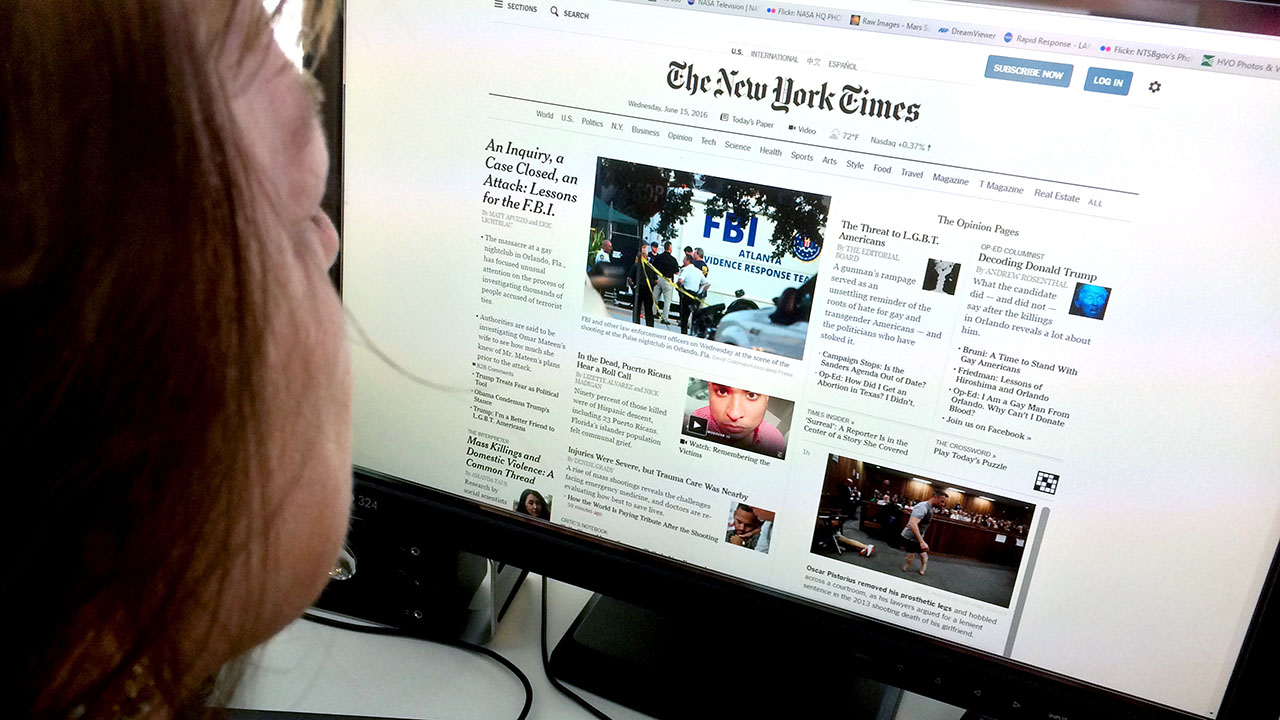The Evolution of Journalism in the Age of News Online
In the quickly altering landscape of journalism, the digital age has actually ushered in a brand-new era where the immediacy of on-line news improves both its development and usage. The rise of citizen reporters and independent voices even more complicates the narrative, adding to a vibrant yet precarious media community.

Increase of Digital Information Platforms
The surge of electronic information systems has essentially transformed the landscape of journalism, marking a shift from traditional print media to vibrant, on the internet rooms. This evolution was thrust by improvements in innovation and the boosting availability of the internet, which allowed news to be shared swiftly and broadly. Unlike their print equivalents, digital platforms can promptly upgrade web content, giving real-time information protection and analysis that charms to the modern reader's demand for immediacy and relevance.
Digital platforms have additionally widened the scope of journalism, enabling a diversity of voices and perspectives. With lower barriers to access, independent reporters and smaller wire service can get to global target markets, testing the syndicate when held by developed media corporations. This democratization of news has actually enriched the general public discourse, providing differed narratives and catering to particular niche rate of interests that were previously underserved.
In addition, the combination of multimedia elements such as video clip, sound, and interactive graphics boosts storytelling, making news more engaging and easily accessible (dw news). This multimedia approach not just attracts a more comprehensive audience however also aids in the understanding of intricate stories. Essentially, digital systems have redefined journalism, promoting advancement and flexibility in an ever-evolving media atmosphere

Effect of Social Media
Social media systems have even more reinvented journalism by modifying how news is consumed and shared. Additionally, social media has broadened target markets, providing reporters accessibility to international viewership past geographical restrictions.

The interactive nature of social media sites promotes engagement, allowing audiences to join conversations, share viewpoints, and add to information narratives. This communication improves the dynamic in between journalists and their target markets, promoting a much more participatory form of journalism. However, this also puts tremendous stress on journalists to produce web content that reverberates with audiences, commonly prioritizing sensationalism to record interest.
Moreover, social networks systems have become essential devices for journalists to source tales, assess popular opinion, and network with market peers. By keeping an eye on trending topics and user-generated web content, journalists can discover stories that may or else be neglected. Yet, the reliance on social networks also requires an essential assessment of sources to make certain the integrity of details shared. In this advancing landscape, adaptability remains essential for reporters to grow.
Obstacles of False Information
Among the electronic transformation of journalism, one considerable challenge is the pervasive spread of misinformation. In a period where info is swiftly available and abundant, comparing trustworthy news and produced web content has actually become significantly difficult. The sheer quantity of details shared throughout numerous on-line systems typically obscures the line in between truth and fiction, positioning a considerable risk to the integrity of journalism.
False information can spread out quickly through social media, where formulas focus on interaction over accuracy, inadvertently amplifying incorrect stories (dw news). This not just weakens public count on in media institutions yet likewise promotes an atmosphere where deceptive web content can affect popular opinion and decision-making processes. The challenge for reporters is twofold: to unmask falsehoods efficiently and to copyright rigorous standards of fact-checking and verification
More complicating this concern is the visibility of deepfakes and advanced disinformation campaigns that utilize progressed modern technologies to develop deceptive content indistinguishable from legitimate coverage. As these innovations develop, so must the devices and approaches used by reporters to fight them. Addressing misinformation requires partnership in between media organizations, technology firms, and policymakers to create detailed techniques that safeguard the credibility of details in the digital age.
Function of Person Reporters
Navigating the landscape of false information highlights the transformative influence of citizen journalists within the electronic world. As conventional media electrical outlets face the sheer speed and quantity of information dissemination online, resident reporters-- ordinary individuals equipped with smart devices and access to social networks-- are playing a significantly critical function. These grassroots factors have actually become important in covering events quickly, usually offering real-time updates from the ground before mainstream media can react.
Citizen journalists have actually equalized information coverage, amplifying voices that might or else continue to be unheard. By leveraging platforms like Twitter, Facebook, and Instagram, they provide varied viewpoints that test the stories often pushed by established media. This democratization, however, also presents difficulties. The lack of official training or content oversight can bring about the spread of unproven details, complicating efforts to distinguish reality from fiction.
Nevertheless, person journalism is improving the media landscape, engaging typical electrical outlets to adjust by incorporating user-generated web content right into their coverage. By cultivating area involvement and motivating participatory journalism, these electronic storytellers add to a more inclusive and vibrant news community. As resident journalists proceed to progress, their function in shaping public discourse remains an essential component of modern journalism.

Future of Journalistic Integrity
As the electronic age proceeds to advance, the future of journalistic integrity faces unmatched difficulties and possibilities. The proliferation of digital systems has democratized information dissemination, enabling a larger range of voices to add to the information landscape. Nonetheless, this has actually likewise resulted in the spread of misinformation and the erosion of rely on media. In view website this environment, maintaining journalistic integrity becomes critical, requiring adherence to rigorous moral requirements and fact-checking processes.
The increase of man-made intelligence and algorithm-driven content curation further makes complex the landscape. While AI can improve reporting by analyzing vast datasets and determining patterns, it also poses threats of predisposition and control. Journalists have to therefore remain attentive, making certain that innovation acts as a tool for fact instead of distortion.
Furthermore, the financial pressures on standard media electrical outlets demand cutting-edge company versions to sustain high quality journalism. Subscription-based models, nonprofit financing, and collaborations with technology firms are arising as prospective services. Yet, they should be sought without endangering content self-reliance.
Ultimately, the useful content future of journalistic honesty depends on the dedication of media and reporters organizations to promote transparency, liability, and an unfaltering devotion to reality, among a rapidly transforming digital globe.
Conclusion
The development of journalism in the electronic age provides both obstacles and opportunities. The surge of digital news systems and social media has actually equalized information circulation, empowering a diverse variety of voices, including resident reporters. However, these innovations necessitate cautious efforts to fight false information and copyright journalistic stability. The future of journalism pivots on the capacity to adjust cutting-edge service versions that sustain high quality coverage while maintaining the integrity and trust fund vital for educated public discourse.
The rise of digital information platforms has essentially changed the landscape of journalism, noting a change from standard print media to vibrant, on the internet areas. With reduced barriers to entrance, independent journalists and smaller news organizations can get to international target markets, testing the syndicate when held by established media conglomerates.Social media platforms have actually better revolutionized journalism by modifying how information is eaten and shared. As standard media electrical outlets grapple with the sheer speed and volume of information you can look here circulation online, resident journalists-- common people armed with smartphones and accessibility to social media-- are playing a significantly crucial function. The increase of digital information platforms and social media has equalized details circulation, equipping a diverse selection of voices, consisting of person reporters.